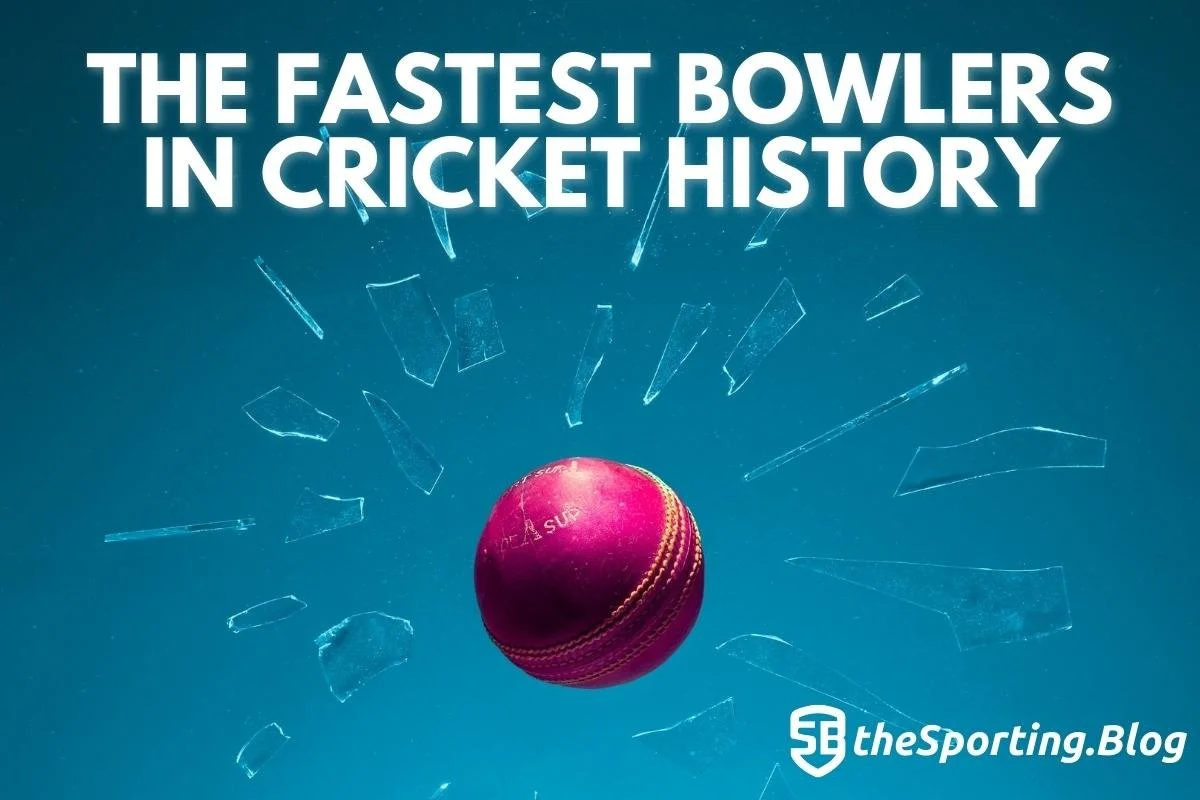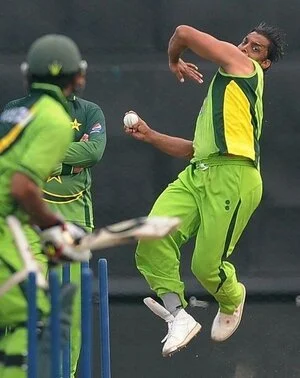The 5 Fastest Bowlers of All Time
The Fastest Bowlers to Ever Play the Game of Cricket
Shoaib Akhtar - The fastest bowler ever
Few things in cricket are as valuable as genuine, express pace. It is extremely rare for bowlers to surpass the 90 mph barrier, let alone cope with the physical demands of doing so.
As such, brilliant, fast bowlers don’t come around too often- and they don’t usually last long when they do.
In an era when the game seems to favour batters more and more, seriously quick bowling is something that transcends all three (four if you include The Hundred) formats and can be priceless to a captain.
With that in mind, we’ve highlighted the five fastest bowlers of all time. To be clear, these are not to be confused with our list of the Best fast bowlers of all time, these are the FASTEST.
This list is likely to cause a fair bit of debate- but these are the five bowlers with the fastest-recorded deliveries in cricketing history, and you can’t argue with that!
5. Mitchell Starc: Australia - 99.67 mph
The only bowler on this list still playing, and the latest in a long line of ferocious Aussie fast bowlers, Mitchell Starc clocked 160.4 kph- just shy of the 100mph barrier- in a Test against New Zealand in 2015.
Ross Taylor was the unlucky batter tasked with facing him and had the experienced Kiwi not been on 137 not out at the time, he may not have been able to keep it out.
The combination of the left-armer’s pace, his ability to swing the ball, and the bounce generated from his height (1.96m) make him a nightmarish prospect for opposing batting line-ups.
It took him a little while to cement a regular place in the Australian Test team but he has now become a pillar of their bowling attacks in all three formats.
The 31-year-old already has 588 international wickets to his name (304in Tests, 211 in ODIs, and 73 in T20Is) and has shown no sign of slowing down.
4. Jeff Thomson: Australia - 99.8 mph
The names Lillie and Thomson are enough to strike fear into the hearts of some England fans, even to this day. This Australian pace duo terrorised batters in the 70s and 80s- particularly on the hard pitches down under.
Jeff Thomson was the faster of the pair despite bowling with an unusual action that he is said to have learnt from his father.
Considered by some to be the fastest bowler of all time, the Australian claimed that he had reached 180 kph but his quickest recorded ball was 160.6 kph in a fast bowling study in 1976.
Thomson’s 12-year Test career saw him take 200 wickets in 51 matches, while he also took 55 wickets in ODIs.
3. Brett Lee: Australia - 99.9 mph
The third of four Aussies on this list, Brett Lee was part of the early 2000s Australian side that is considered by many to be one of the greatest of all time.
Getting noticed is not particularly easy when you’re part of a bowling attack that includes Glenn McGrath and Shane Warne but Lee was able to step out of their shadows- due, in part, to his express pace.
Lee’s fastest delivery came in 2005 against New Zealand and clocked in at 160.8 kph, which is 99.9 mph, not quite breaking the 100 mph barrier but still enough to make him the third-fastest bowler of all time.
In the early 2000s, much was made of the battle between the Australian and Pakistan’s Shoaib Akhtar to break that barrier first. Lee never did and we’ll get to Akhtar a little later.
While his Test record is excellent (310 wickets at 30.81) and he was vital to so much of the success of his country during his career, there’s a strong argument to be made that the shorter formats were better suited to his skillset- and many consider him one of the greatest ODI bowlers of his generation- if not ever.
2. Shaun Tait: Australia - 100.1 mph
Another quick from down under with a rather unique bowling action, Shaun Tait may not have an international record that matches up to the likes of Starc, Thomson, or Lee- but he features above all three of them on this list.
Known as ‘The Wild Thing’, Tait’s sometimes unpredictable bowling style likely only made facing him a more terrifying experience for opposition batters.
He saved his fastest delivery for Australia’s fiercest rivals as he reached 161.1 kph (100.1 mph) against England in an ODI at Lord’s, the Home of Cricket, and in doing so bowled one of only two recorded balls to have broken the 100mph barrier.
Tait played just three Tests for his country, taking five wickets, while he took 62 in 35 ODIs and 28 in 21 T20Is but arguably his greatest contributions came in T20 franchise cricket- playing in tournaments all around the globe.
1. Shoaib Akhtar: Pakistan - 100.2 mph
It should surprise absolutely no one to see the man dubbed ‘The Rawalpindi Express’ at the top of our list.
The Pakistani fast bowler’s numbers (178 Test wickets, 247 in ODIs, and 19 in T20s) simply don’t reflect the impact that he made on the cricketing world.
Akhtar arrived on the international stage in the 1990s and it was as much about the attitude as it was the searing pace.
The right-arm quick tore in off a lengthy run up and became the first bowler ever to break the 100 mph barrier, doing so at Newlands against England in the 2003 World Cup when he was clocked at 161.3 kph (100.2 mph).
There’s a strong argument to be made that he didn’t accomplish as much as a bowler as he should have, but he remains the fastest-recorded bowler in cricketing history. And in Pakistan, where Cricket is a religion, Akhtar is rightly revered as a cricketing God, and a God with a lethal bouncer!
Records are, of course, there to be broken- but it’s going to take a fantastic player to surpass Akhtar.











